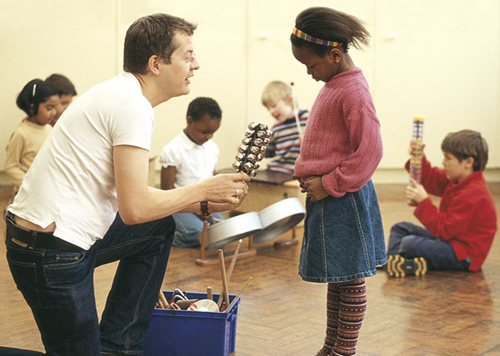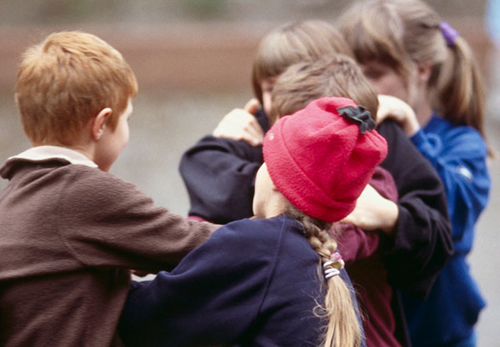Therapies for children The various options
There is a wide range of
therapies available, and it can be difficult to judge which one will be
best suited to your child and her difficulty. When you’re looking at
types of therapy, do check that there is clear evidence, preferably from
academic research as well as case studies, that each is effective. Take
note of whether the particular approach is recommended for your child’s
difficulty. Some, for example, family therapy, are helpful for eating
disorders, whereas cognitive behavioral therapy is suggested for
depression. There are guidelines available to assist you in selecting an
approach. Whichever therapy you choose, the trusting relationship
between your child and her therapist will play a central role in the
healing process.
Parenting programs
Also known as
parent training, these are attended by parents, caregivers, and
sometimes grandparents, and are recommended if your child has
difficulties with behavior and hyperactivity. They are based on the idea
that you are in the best position to help your child by guiding and
encouraging positive behavior. Parenting programs are often offered in
groups, usually over eight to 12 weeks, during which you will be taught a
range of strategies to build up your relationship with your child and
manage misbehavior. Parenting programs are based on social learning
theory, have been well researched, and are most effective when all
sessions are attended and you complete homework tasks. If your child has
serious difficulties with attention, then medication may also be used
as part of a treatment plan.
Cognitive behavioral therapy (CBT)
This is a widely
used approach for difficulties including repetitive habits, depression,
and anxiety. CBT helps your child understand how her thoughts affect her
feelings and behavior. She will be guided to challenge and replace
negative or unhelpful patterns of thought. CBT is usually brief, around
six sessions of an hour each, and can be individual or group. Common
topics for group CBT would be coping with anger and improving social
skills. CBT is well researched and does reduce the duration of your
child’s difficulty. It is often offered as the first line of treatment.
Non-directive supportive therapy
Also known as
client-centered therapy or counseling, this is commonly used with
children who have mild difficulties. It involves the therapist providing
an opportunity for your child to express and explore thoughts and
feelings with a warm, empathic, and non-judgmental listener. The aim is
to enable your child to become self-aware. The number of meetings varies
considerably and is negotiated between therapist, child, and parent.
Interpersonal psychotherapy (IPT)
IPT focuses on your
child’s relationships, aiming to improve her ability to manage
disagreements, loss, and change. Your child will meet individually with a
therapist for sessions, usually of an hour’s duration. IPT is
time-limited, lasting for 16 to 20 sessions, and is helpful with a range
of difficulties such as eating disorders and depression.
Psychodynamic therapies
This form of
psychotherapy includes a wide variety of approaches based on the premise
that your child will benefit by gaining an understanding of both her
conscious and unconscious experience. The psychodynamic therapist will
listen to your child’s thoughts, and may comment on or interpret their
meaning. The evidence for the effectiveness of psychodynamic approaches
with children is limited, although some studies have found it to be
beneficial. Psychodynamic therapy is usually of long duration: 30 or
more sessions may be needed, depending on progress and the type of
therapy used.
Common psychodynamic therapies with children
Play therapy
This allows your child
to act out and resolve issues and emotions through play. It is usually
offered to children between three and 11 years old and involves sessions
once a week with a therapist in a well-equipped playroom. Your child
will be invited to play with anything in the room. The therapist will
not lead or suggest but may comment on the play. Play therapy may be as
short as 12 weeks or take more than a year.
Psychodrama and drama therapy
Both of these
approaches use performance arts such as role play, storytelling, and
games to enable your child to express and understand her feelings.
Sessions are usually in groups, and each may last for an hour or more.
In psychodrama your child will often take the part of herself during the
exercises, whereas in drama therapy she will act a role, perhaps
playing someone with difficulties similar to hers.
Art therapy
Art therapy
involves the expression of thoughts, feelings, and events through visual
arts, such as painting, drawing, and sculpting. Art is used as an
alternative to verbal communication for children unable to express their
experience in words, or who do not have the developmental ability to do
so clearly. One aim of this therapy is to raise your child’s suppressed
emotions.
Family therapy
Your child’s
difficulties will be seen in the context of family issues and
relationships rather than as her problem alone. This usually involves
family members meeting in a group with the therapist although,
occasionally, therapy is with each person individually. You will be
guided to explore tensions or clashes, your role and your child’s role
in the family. Alternative ways of relating to and supporting each other
will be considered. Family therapy can be effective in 14–15 sessions,
but may take longer, depending on progress. It is often offered as a
treatment for eating disorders.
Psychodynamic
Play and drama therapy
are common psychodynamic approaches for children. They allow your child
to act out her emotions, as she may find it hard to express feelings in
words.

Fighting
Very rough
and consistently aggressive behavior should be addressed (bottom left).
Therapy is an excellent method of helping your child learn to express
himself calmly.

Potential signs
If your child seems extremely sad and withdrawn all the time, you may want to consider therapy.
